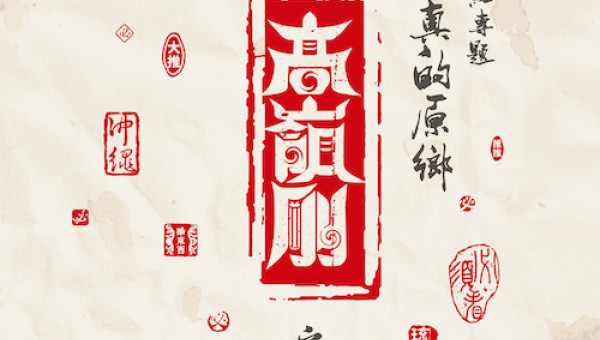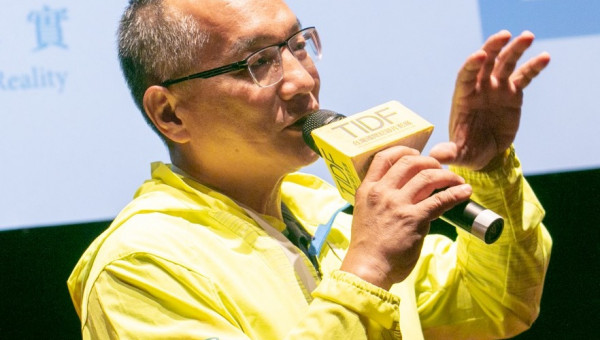MORE THAN TWO SIDES TO EACH MEMORY: PETER KEREKES and VIERA ČÁKANYOVÁ
The 'Filmmaker in Focus' functions as an axis of sorts for the festival: by highlighting the style of a single filmmaker, this choice serves to anchor and orient discussions related to documentary filmmaking. Seen from this perspective, the directors showcased throughout the years at TIDF have tended to gaze at the margins and fringes of their surrounding world, regardless of their background or era. Their visual vocabularies have also sought to transcend the boundaries of genre in a range of novel experiments, an indication of the festival's focus on the form and content of its selections.
With this spirit in mind, this year we have chosen to present in tandem two Slovak filmmakers who have embarked on vastly different journeys: Peter Kerekes and Viera Čákanyová. In addition to introducing audiences to lesser-known Slovak films that offer a perspective on society and creative scope different to that from Western Europe, the juxtaposition of these two directors seeks to illustrate the multitude of possibilities in depicting collective memories, highlighting that national identities should not be taken as singular markers of style.
Even though the two filmmakers show a vast difference in terms of form and style, they both began their careers in fictional film, before being drawn to documentaries through the connection between images and the real world. As documentary auteurs, both continue to explore personal memories, collective history, and representing realism through their distinctive lenses.
Dialogues and Games, On and Off Camera
When Peter Kerekes was studying at the Academy of Performing Arts in Bratislava in the 1990s, there was still a clear-cut divide between fictional and documentary film at the school. Although originally showing no interest in the documentary genre, he nevertheless decided to produce a film in response to a call for submissions at a local TV station, and chose as his subject a mental institution in his hometown. He volunteered at the institution to blend in and study the environment before shooting. However, when he returned with his film crew, thinking that he had prepared well enough for the job, he quickly realised that he was invading into the residents’ lives, as they stared at the unfamiliar contraptions that were the film cameras. Unable to document what he saw during his earlier field surveys, he asked his subjects to ‘act out’ their usual daily routines for the camera. When he later shared his experience with a fellow student majoring in documentary filmmaking, however, he was admonished for crossing the invisible boundary dividing the worlds in front of and behind the camera.
This unexpected turn of events ignited his interest in recreating reality, leading him to explore ever freer methodologies and visual vocabularies. A key realisation for him was that the camera’s existence during filming could never be ignored: in past interviews, he remarked that the 'fly on the wall' approach long seen as the gold standard in documentary filmmaking was simply impossible for him. By contrast, his presence was more like 'a massive piece of furniture standing in the corner.' Since subjects in front of the camera will inevitably feel its presence, no matter how small the machines or film crew become, it is better for each filmmaker to find a way of their own that suits their style, rather than trying to conform to the mainstream.
For him, this style involves an insatiable appetite for chit chatting and finding fun. When he graduated in 1997, the unstable political and economic environment in Slovakia meant that it was nearly impossible to find funding to make films. Having just lost his grandfather, Peter would chat with his grandmother all day, and the swimming pool that the family frequented often came up in conversation. 'If you can't go to the sea, you have to be happy with the swimming pool', she would say, as their family had lived for generations in inland Eastern Europe. This led him to wonder about the stories of the people for whom the swimming pool formed part of their existence. He originally published his work as a written script, incorporating many interviews he conducted with his family and other swimmers, before committing the project to film after receiving funding in 2001.
When the film crew arrived at the pool, they redesigned the interview prompts and camera angles, not just for efficiency or to create a better-looking scene on camera, but also to carve out interesting scenarios for their subjects as they talk. A middle-aged man surrounded by bikini-clad girls; a grandma looking about for someone to play her a younger version of her husband—interviews have become more than mere Q&A sessions, and the director’s instruction to reenact is no longer an act of exasperation when filming does not proceed as planned. All those involved, both in front of and behind the camera, come together to play in a game they have created, and the resulting 66 Seasons (2003) thus manages to light-heartedly rekindle the lives and memories of war intertwined with the swimming pool.
Performing Memories, Recreating History
Dialogue and games have thus become trademark qualities of his output, as his following works continue to feature different modes of 'performance' in conjunction with his interest in personal choices amid the tides and currents of history. Cooking History (2009), for example, looks back at the wars and turmoil in European history through the perspectives of military cooks. As the director and his interview subjects did not share a common language, he chose to give his subjects free rein in front of the camera in quasi-theatrical scenarios, as they cook dishes that bear particular significance to them in times of conflict; as the cooks prepare their meals, we hear them recount their recollections and thoughts of war. Velvet Terrorists (2013), co-directed with Ivan Ostrochovský and Pavol Pekarčik, features three 'terrorists' who were imprisoned for their opposition to the Communist regime in Czechoslovakia. As they reenact the preparations for their 'terrorist' attack, we hear how they dream about revolution and love as they assemble explosives and undergo repetitive physical training, while reflecting how rebels can become heroes under a different regime. Finally, 107 Mothers (2021) features both professional actors and real-life figures, transforming memories and experiences through the act of performing.
Questioning national identities and politics
The act of performance takes on renewed prominence in Second Chance (2014), a segment in the omnibus film Slovakia 2.0, which featured 10 Slovak filmmakers as they offered their commentaries on this young nation. In this short film, Kerekes himself acts in his own absurdist play in which Finland is invited to invade Slovakia, and the act of filming becomes a performative act of criticism aimed at the political situation in the country.
Slovakia 2.0 also features Rupicapra (2014) by Viera Čákanyová, who is also a graduate of the Academy of Performing Arts in Bratislava, with a degree in playwriting. Due to her interest in 'direct contact with reality,' she then enrolled in the documentary filmmaking program at the Film and TV School of the Academy of Performing Arts in Prague (FAMU). Her works often feature a wide-ranging visual vocabulary of fictional, surreal, fantastical elements, aiming to break through the confines of blank documentary-style dialogue. However, this short film breaks with her usual style, as she follows an American moves to Slovakia, during which seemingly ludicrous acts and speech serve to highlight the paradoxical nature of modern-day nationalities, borders, wars, and politics; in contrast, it might be better worth our while to go in search of the Rupicapra, the elusive chamois that symbolises nature.
The 'Post-human Trilogy' and the Contemporary Meaning of Audiovisual Records
This has not been Čákanyová’s only work to reflect upon modern civilisation, however. In her latest work, Notes from Eremocene (2023), artificial intelligence has now dominated all physical existence in the near future, and the dialogue between humans and AI serves as a critique of unbridled technological development and scientific predictions, leading us to think on a deeper level about democratic elections, political systems, religion, culture, and other human constructs. In her constructed scenario of human existential crisis, do audiovisual records still serve as proof that humans have existed? When digital files are no longer bound by physical storage, and can be altered in an instant with AI or even disappear in the cloud, images take on a different meaning in relation to memory and existence.
These questions can be seen as a continuation of issues raised in the earlier FREM (2019). Shot on a trip to a research base in Antarctica, the film takes the perspective of an AI entity studying its surroundings. The imaginary perspective of AI points to how human memory is frozen in images, where the film itself serves as fossil evidence that humans once existed.
While she was shooting the film under harsh conditions, Čákanyová turned the camera on herself for the first time in her career to keep her sanity in check. Originally intended only to serve as a reference for her editing team, her visual diary ended up being the perfect companion piece to the fictional AI perspective, and the result became White on White (2020). These two films, along with Notes from Eremocene, constitute her 'post-human trilogy,' each film adopting a different viewpoint to reflect on their common apocalyptic anxiety, and the relationship between humans and non-human entities. Moreover, we see how she, as a filmmaker, ponders the contemporary meaning of audiovisual recordings in documenting, preserving, and recreating reality.
Memories and Realities in Visual Diaries
She has long been interested in how images interact with memory and reality. Her graduation project Alda (2009) began from the internet diary of a patient with Alzheimer's disease, in which she saw how individual memories can alter personal or collective experiences, even as memories falter and fade away in between the lines. She wrote a script based on the diary, and gave the diary writer a digital video camera to record snapshots of her daily life. In the hands of a video-making amateur, the camera would be placed almost aimlessly or even forgotten, inadvertently capturing an even more powerful directness, which eventually became Olda (2010).
The two films complement each other, as they portray different aspects of reality: the first, shot on a professional film camera, with an actor recreating from a script; the second, a low-fi, low skill diary on digital video, documenting the very real everyday life of the film’s subject. Is the latter approach, with its fragmentary recollections and unpolished observational footage, closer to what is 'reality'? Long before technology allowed us to conjure up images out of nowhere, documentary video has already endured a complex relationship with 'subjective' memories and 'objective' reality.
In addition to their Slovak nationality and its common historical and societal legacies, these two filmmakers share an interest in personal memories and an ever-innovative experimental spirit that connects them in our feature showcase.
Peter Kerekes loves dialogue, but his works go far beyond traditional documentary-style interviews; rather, they conjure up details in memory that are hard to put into words, but which are revealed through highly interactive reenactments, bringing to light memorable tales otherwise lost in grand historical narratives. By contrast, Viera Čákanyová takes a more personal, inward-looking approach as she weaves fiction with realism, to investigate personal and collective memories in an era where visual media has become highly volatile: have our memories become just as fleeting as our existence, or can this be considered the opening of a new era?
The works featured in this segment contrast starkly in their styles, but share the same endeavouring spirit in their experimentation, as they portray the various ways and limits that visual images can be used to recreate memories. Although different in their approaches, these two filmmakers nevertheless engage in the same discourse in terms of documentary filmmaking: for these creators, they are in a never-ending exploration and inquiry into methods that transcend boundaries and genres.
Translated by Kevin WANG


